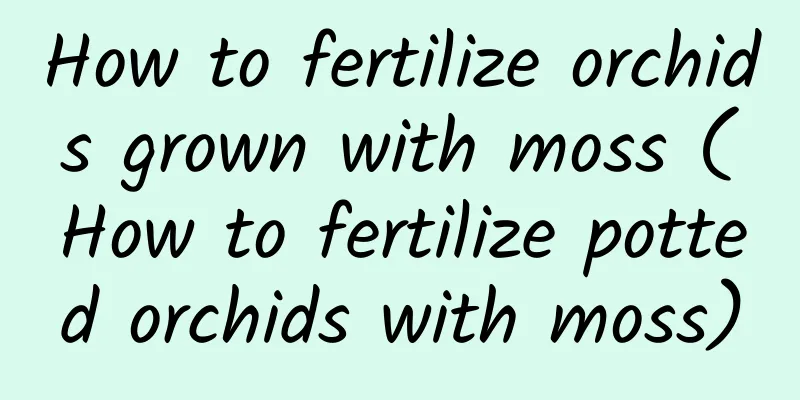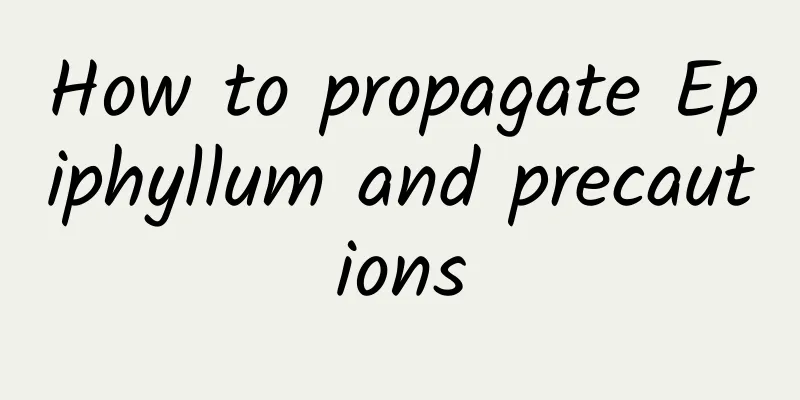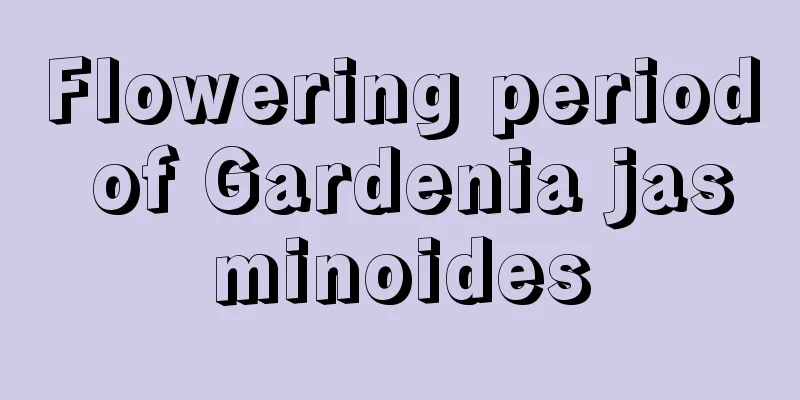How to fertilize orchids grown with moss (How to fertilize potted orchids with moss)

|
An orchid lover asked: How to fertilize orchids grown with moss? In fact, what you call "moss" refers to "sphagnum moss", which is what we often call "moss" plants, which are mainly composed of its leaves and stems . When using moss to grow orchids, due to its insufficient nutrients, timely supplementation of nitrogen, phosphorus and potassium is required to meet the nutrient needs of orchids during their growth and development . Therefore, to answer your question well, we must first understand the horticultural value of using moss to grow orchids and the content of its main ingredients . From the perspective of the horticultural value of using moss to cultivate orchids, it is mainly reflected in: It uses its hollow parenchyma cells to absorb and transmit water . The hollow cells contain water and air, so that the water and oxygen absorbed by the orchid roots can be transported to various parts of the orchid such as the pseudobulb and leaves in time. Because moss, as a plant, has lignified cell walls, the hollow cells are filled with air after drying, and the shape and structure will not collapse, so it can still absorb and transport water even after becoming peat. Orchids grow in moss, and as long as it is kept properly hydrated, it can provide the ideal humidity and air content needed for orchid growth. Despite this, the moss itself has few nutrients and is insufficient in absorbing, storing, and transporting nutrients to various parts of the orchid, so it needs to be supplemented by topdressing fertilizer. If you apply the long-acting granular slow-release fertilizer "Magic Fertilizer", you can scatter 20 to 30 grains on the surface of the pot. Since the granular magic fertilizer is not easily dissolved when watering or raining, it will release phosphorus and magnesium elements only when the orchid needs nutrients, which can maintain a long-term and continuous nutrient supply for the orchid. Inorganic fertilizers such as urea and potassium dihydrogen phosphate should be diluted 1000~2000 times before use. Inorganic fertilizers contain different nutrients and have different effects on orchids. Therefore, the application should be coordinated, and foliar spraying and root irrigation fertilizer should be carried out alternately. During the nutritional growth period of orchids, nitrogen fertilizer should be applied mainly, supplemented by phosphorus and potassium fertilizers; in the early stage of reproductive growth, phosphorus and potassium fertilizers should be applied mainly. In terms of the interval of fertilization, we can generally apply topdressing once every 10 to 15 days, and apply it 2 to 3 times continuously per month . |
>>: How to care for Molan to make it sprout new buds (When does Qihei Molan sprout leaf buds)
Recommend
Small cherry tree bears fruit in several years
Small cherry tree fruiting after several years of...
How to fertilize the Chinese lucky charm?
Dilute fertilizer Because the root system of the ...
How long is the pomegranate fruiting period? Fruiting period maintenance and management methods
How long does the pomegranate fruit season last? ...
What to do if the domestic azalea wilts
1. Increase humidity Reason: We just moved the az...
Dahlia cultivation methods and precautions
1. Soil When growing dahlias, its environmental r...
Why do camellia leaves become dry and fall off?
1. Excessive watering Cause: Excessive watering c...
Bitter melon cultivation methods and precautions
1. Maintenance methods 1. Temperature: It has dif...
What to do if the leaves of the green treasure tree turn yellow
1. Pest problems (1) Cause: If the plant is kept ...
How to promote the growth of Rieger Begonia
Methods for promoting seedlings of Rieger Begonia...
What are the varieties of sage?
Bagdan Sage Bagdan sage is extremely resistant to...
Kiwifruit Management Techniques in April
As April begins, kiwifruit orchards in northern r...
When is the best time to plant loofah?
Loofah is a common vegetable widely grown in rura...
Classification of Evening Mist Flowers
The Love of Yugiri Flower Series The Yugiri flowe...
The role and efficacy of kudzu
1. Breast augmentation Kudzu has the effect of br...
How to grow Roselle in spring
1. Control Lighting Roselle does not require much...









